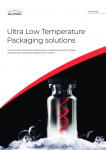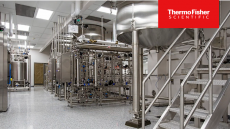Exclusive interview with Bilcare CSO Dr Praful Naik
India’s Bilcare unveils anti-counterfeiting system
But aside from the capabilities of these technologies another consideration – the cost of implementation – has to rank high among project priorities. It is notable that radiofrequency identification, an early front-running solution, has failed to make headway in the pharmaceutical sector despite endorsement by the US Food and Drug Administration (FDA) back in 2004, and that is in part at least because of the cost of the technology itself.
India has already emerged as a low-cost centre for the pharmaceutical industry, initially in the area of primary and secondary manufacturing and latterly in drug development, so it is perhaps unsurprising that an Indian company, Bilcare, promises to bring a low-cost authentication technology to the table.
In an interview at Visiongain’s Pharmaceutical Anti Counterfeiting Strategies conference in London recently, Dr Praful Naik, chief scientific officer at Bilcare, explained the features of its fingerprinting technology and how the company has been able to keep costs down to a level that makes it an option for the less-developed regions of the world.
“A pharmaceutical product can cost as little as 5 cents in Asia, so it is hard to envisage a scenario in which an RFID tag costing 20 cents can be added to a product and provide added value to a patient or healthcare system,” said Naik.
What is desperately needed is a system that provides a high level of sophistication, yet is commercially viable and enforceable for implementation within healthcare systems around the world, according to Naik.
Bilcare’s solution is a fingerprinting technology that relies on nanoparticulate metallic materials with unique magnetic and optical features and can be used alongside any other standardised product identification system, including barcodes or 2D matrix codes, on a product label. That fingerprint is truly randomised – no two are alike – so it becomes impossible for a counterfeiter or even Bilcare itself to duplicate them.
“It’s like taking handful of molecules and throwing them at a screen,” said Naik. “You will never get the same pattern twice.” The tags are also not activated until they reach the pharmaceutical manufacturer’s facility and are applied on the production line – adding a further safeguard against pilferage of the technology.
On activation, the tag is linked to a date stamp and other information from the barcode to help track and trace each product unit.
A low-cost scanner reads the standardised product identification technology such as a barcode alongside the underlying embedded fingerprint. Simultaneously, it communicates that integrated, encrypted information to a data server, and picks up a return signal to indicate whether or not the product is authentic.
“For the user it’s a very simple process, but that masks a complex series of processes and systems that is difficult for a counterfeiter to overcome,” said Naik.
“Counterfeiters across the globe want to produce drugs that are easy to copy, and have no loyalty to a brand. So they focus on fast-moving, profitable brands, with a low probability of being caught,” he added. “Our technology has the required complexity to dissuade counterfeiters from working on products that use it.”
Sophistication is the key
There have been some high-profile failures in the Asian market among companies trying to develop anti-counterfeiting strategies using simple holograms that provide clear support for the need for a high-tech, sophisticated anti-counterfeiting strategy.
One issue has been that drugmakers have tended to develop a strategy and then put that out to tender to several providers, and that has meant that for every secured contract, there are a number of disappointed providers with knowledge of the strategy and the capabilities to mimic the anti-counterfeiting technology.
“There is not a single hologram that does not have a copy in Asia,” said Naik. “In fact, this technology has become a menace, as it imposes an extra level of responsibility on the manufacture in defending its brand and proving that a product is counterfeit.”
Greater use of technologies such as holograms has meant that companies often have to rely on time-consuming and expensive forensic testing to prove that a product is not genuine.
Moreover, a small study carried out in India recently found that end-users could not identify the difference between a pack with a hologram and one with a simple silver label, raising questions about the value of the approach in the absence of a concerted education effort aimed at consumers and healthcare providers.
There has also been a case where a counterfeiter added a hologram to its pack, even though there was none on the genuine product, in order to make its product seem more legitimate.
Bilcare’s technology also overcomes some of the limitations of other authentication technologies, including RFID. While it is possible to remove an RFID tag and affix it to another product, this would render Bilcare’s technology unreadable as the fingerprint would become disorientated, said Naik.
Technology for the masses?
One objective set out by Bilcare was to develop a system that could make use of an ultra low cost scanner that could feasibly even be made available to consumers if that was deemed appropriate by health authorities, with the communication elements encrypted and sent via the user’s cellphone, telephone line etc.
“Most 2D scanners cost thousands of dollars per unit, but we have pared the cost down to $100,” said Naik. The cost could go down even further if sufficient numbers of scanners were ordered.
“Today we are talking about a simple barcode, which can be combined with the fingerprint scanner to provide a unique authentication system that is secure and commercially viable,” he added. That will require much less investment than, for example, widespread rollout of RF scanners across a healthcare service.
Bilcare is offering the fingerprinting technology as a comprehensive package, including hardware (scanners and authentication units), label supply, communications and database holding and implementation of the system.
The technology clearly works, but are we facing a situation where healthcare providers – and particularly the pharmacists as gatekeepers monitoring the medicines distributed to patients – going to end up with a plethora of rival technologies and scanning devices?
“There clearly needs to be convergence of technologies, but we have tried to design the scanner with future applications, not just counterfeiting, in mind,” commented Naik.
Broadening the value proposition for customers means could clearly give Bilcare an advantage as rival authentication technologies go head to head.
“The underlying base technology can also be used for compliance, for example patients could be asked to scan it when they take a drug, allowing their use of the medicine to be monitored, or provide manufacturers with consumption patterns for their products.”
Having another authentication technology on the table, will not make drugmakers task any easier when developing their anti-counterfeiting strategy, but Bilcare’s high tech, low-cost solution, with added business benefits, makes it a worthy contender.














